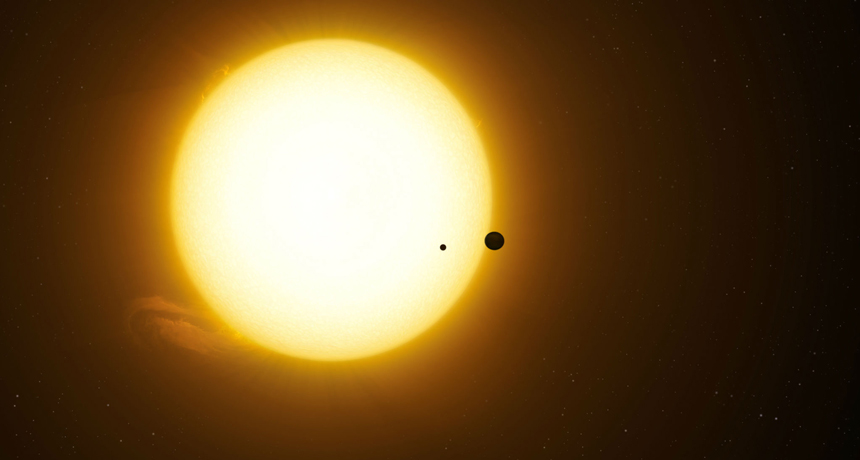Hubble may have spotted the first known exomoon
Dubbed ‘Neptmoon,’ the gas moon’s unusually large size defies theories on how moons form

SIDE BY SIDE A Jupiter-sized planet and a Neptune-sized moon cross in front of the star Kepler 1625 in this artist’s illustration. Hubble spotted signs of the moon in observations made in October 2017.
Dan Durda







